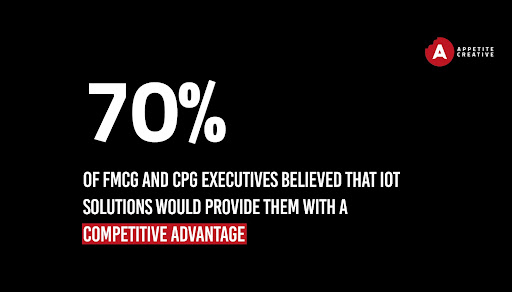IoT, or the Internet of Things, is a concept that’s taken the tech world by storm in recent years. At its core, IoT refers to the interconnection of everyday devices to the internet, allowing them to collect and exchange data. These devices, often embedded with sensors, software, and other technologies, can communicate and interact with others over the internet, and they can be remotely monitored and controlled. It’s like giving “life” to objects that were previously just static. Whether it’s a smart fridge notifying you when you’re out of milk or a city managing its traffic lights based on real-time data, the applications of IoT are vast and transformative.
To learn more about this, please see IoT: A New Era of Connectivity.

Connected Packaging in the Realm of IoT
When we think of IoT, we often imagine smart homes and cities, but its applications extend far beyond that. One such application is in the realm of Connected Packaging. This innovation primarily involves FMCG (Fast-Moving Consumer Goods) and CPG (Consumer Packaged Goods) sectors. Essentially, Connected Packaging refers to the integration of smart technologies into product packaging, allowing for increased interaction between brands and consumers. For example, by scanning a QR code or an embedded sensor on a package, a consumer might access a wealth of information about the product, receive personalised promotions, or even verify the authenticity of a product. According to 2021, the global smart packaging market is expected to reach $26.7 billion by 2026, highlighting its growing significance. Such an evolution in packaging not only enhances consumer engagement but also provides companies with invaluable data to fine-tune their marketing strategies and optimise supply chain management. This interplay of packaging and technology is a clear testament to how IoT is reshaping even the most traditional aspects of our lives.
FMCG and CPG: Front-Runners in Adopting IoT
Fast-Moving Consumer Goods (FMCG) and Consumer Packaged Goods (CPG) sectors are often quick to integrate the latest technologies to maintain their competitive edge. IoT has not been an exception. With the incorporation of IoT, these industries can achieve better inventory management, real-time tracking, and enhanced consumer insights. For instance, smart shelves equipped with weight sensors can notify when stock levels are low, ensuring timely replenishment. Furthermore, in 2019, it was found that 70% of FMCG and CPG executives believed that IoT solutions would provide them with a competitive advantage. By harnessing the power of IoT, these sectors can respond swiftly to market demands, reduce wastage, and foster a more personalised relationship with their consumer base.
In conclusion, IoT’s influence permeates various sectors, revolutionising how businesses operate and how consumers interact with everyday products. As technology continues to evolve, the bridge between the digital world and our tangible reality will only grow stronger, heralding an era where everything is truly interconnected.
Visit Appetite Creative’s Blog for more of such content!
